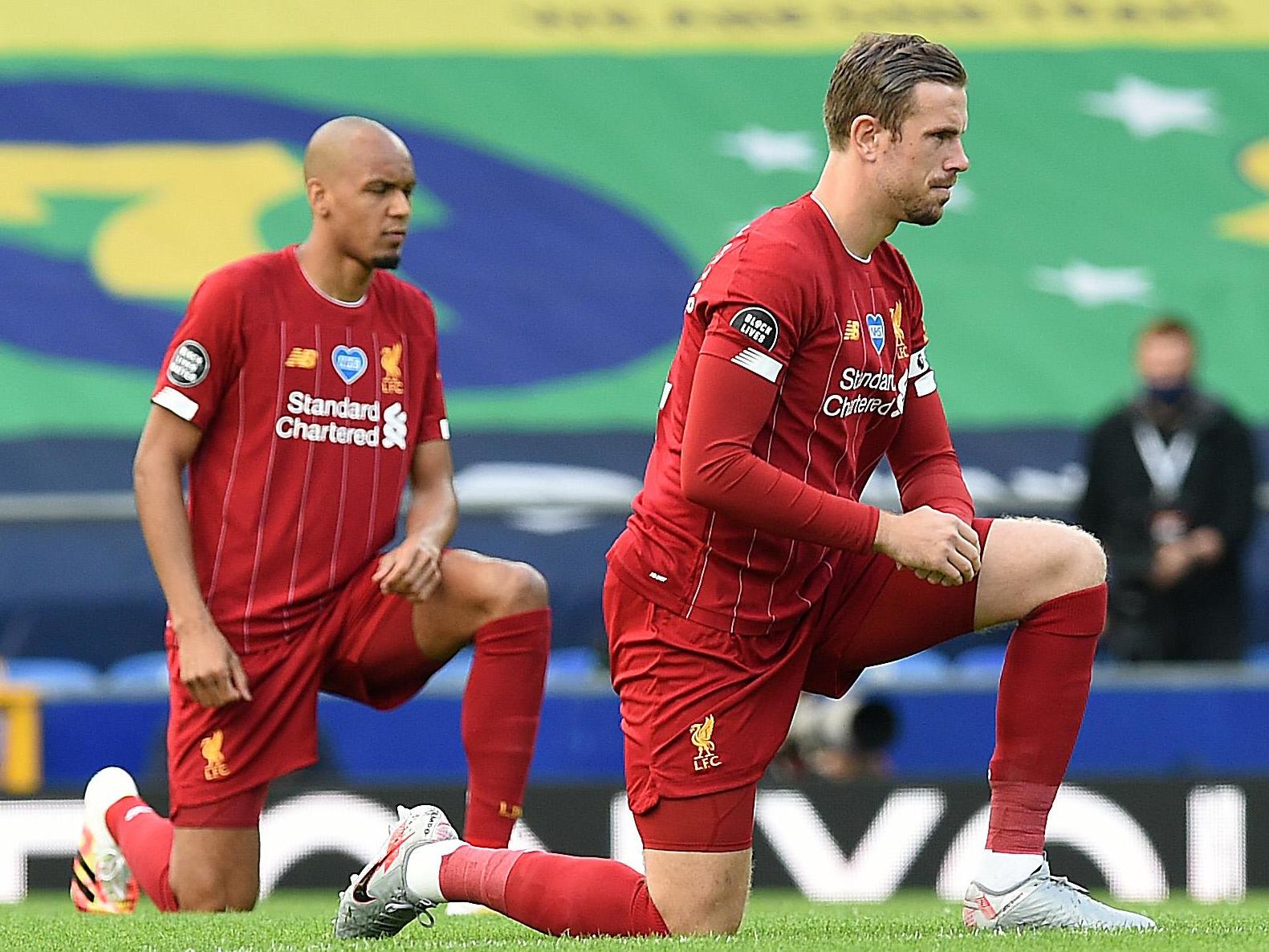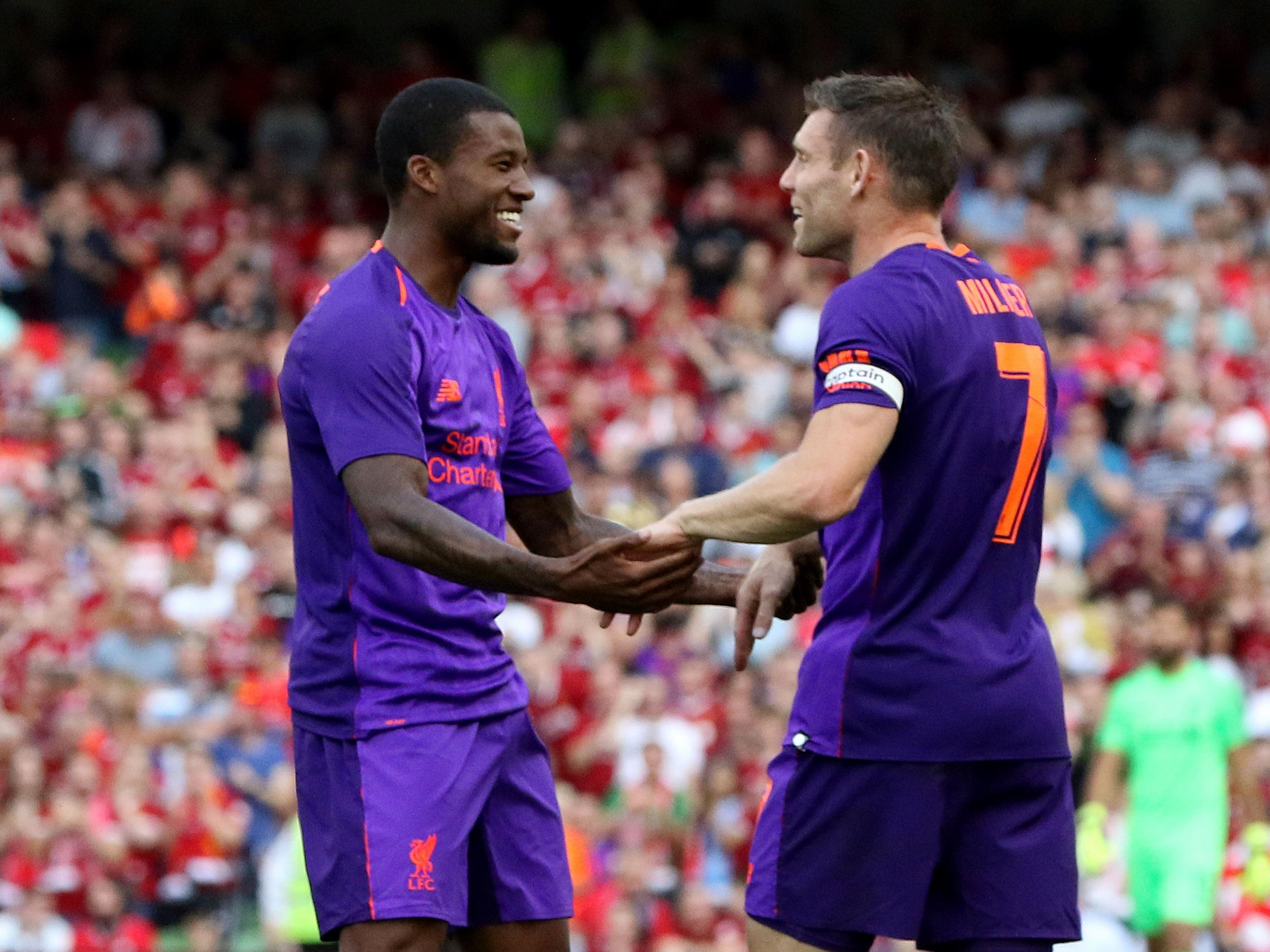Jurgen Klopp wanted a midfield change at Liverpool – instead he got a revolution
An exodus was partly planned, partly thrust upon the Reds coach by Saudi Arabia’s injection of money

Your support helps us to tell the story
From reproductive rights to climate change to Big Tech, The Independent is on the ground when the story is developing. Whether it's investigating the financials of Elon Musk's pro-Trump PAC or producing our latest documentary, 'The A Word', which shines a light on the American women fighting for reproductive rights, we know how important it is to parse out the facts from the messaging.
At such a critical moment in US history, we need reporters on the ground. Your donation allows us to keep sending journalists to speak to both sides of the story.
The Independent is trusted by Americans across the entire political spectrum. And unlike many other quality news outlets, we choose not to lock Americans out of our reporting and analysis with paywalls. We believe quality journalism should be available to everyone, paid for by those who can afford it.
Your support makes all the difference.It transpires there are different kinds of problems involving the Liverpool midfield. Last season was a tale of the aged, the injured, the inconsistent and the incoherent, the malfunctioning midfield that meant a champion team suddenly looked disjointed and disappointing.
If it was an exaggeration to say Liverpool didn’t have a midfield last season, in a sense they don’t have one now. Or not their old midfield, anyway. An exodus was partly planned, partly thrust upon Jurgen Klopp by Saudi Arabia’s injection of money and unexpected wish to acquire defensive midfielders. Perhaps Jordan Henderson and Fabinho will not be able to gegenpress in 45-degree heat, but it is not Klopp’s immediate concern; if the plan was for two new faces to feature in his first-choice midfield, a complete overhaul has become necessary. He wanted change and got a revolution instead.
Of the six midfield departures, Arthur Melo – he of the solitary, 13-minute appearance – is still more of an afterthought now. Naby Keita and Alex Oxlade-Chamberlain are cases of what might have been, some of their potential left unrealised amid spells on the treatment table. But James Milner, Henderson and Fabinho were three of the quintessential Klopp midfielders: the fourth, Gini Wijnaldum, left in 2021.
Between them, they played 1,063 times for Klopp; they rank second, fourth, 17th and 11th respectively for most appearances in the German’s managerial career and, even including his days at Mainz and Borussia Dortmund, no central midfielders have lined up as often for him. They were the men who made his teams work, the rhythm section of his heavy-metal football, leaving the glamorous jobs to others.
There were always other midfielders, but they were usually those trusted for the big occasions. In the 2018 Champions League final, Milner and Wijnaldum flanked Henderson. Come the 2019 final, when Fabinho had joined, he had the anchor role, with Henderson and Wijnaldum either side and Milner deployed as a specialist finisher, using his experience to see out the victory. The Dutchman was a different sort of finisher on Klopp’s greatest night: initially benched for the second leg against Barcelona, Wijnaldum came on at half-time, as Milner switched to left back, to score twice in a 4-0 triumph.
All of which was uncharacteristic. Those 1,063 appearances produced just 71 goals, a total that would have been smaller still but for Milner’s excellent penalty-taking. There were 99 assists, too, but to put that in context, Kevin De Bruyne has got 149 on his own for Manchester City since Klopp’s appointment at Anfield, plus 92 goals.

The definitive Klopp midfielders were the selfless support acts, defined by what they did not do – score, for instance – and where they did not go: the penalty area, or not often anyway. The full-backs usurped them as creators; the goals came largely from the front three; if most great teams have at least one goalscoring midfielder, and Klopp’s Dortmund protégé Ilkay Gundogan developed a potent streak for Pep Guardiola and alongside De Bruyne, his Liverpool were the exception.
His core four at Liverpool were the masters of the unspectacular: workhorses who ran many a mile, though often in relatively short distances, experienced figures who were experts at positional discipline. They were a reason why, at their best, Liverpool were rarely caught on the counter-attack, even when Andy Robertson and Trent Alexander-Arnold were in the final third. Liverpool were never a pure possession team but Wijnaldum, in particular, tended to have very high pass-completion statistics. It was in part because they were rarely charged with playing the most ambitious balls but Wijnaldum, especially, made playing in a Klopp midfield look deceptively simple: as his far greater goalscoring return for the Netherlands showed, his was a self-sacrificial role, playing within himself with the intelligence to make the tactics of a narrow 4-3-3 work.

In one respect, Fabinho is the anomaly. He was the specialist defensive midfielder. The other three were all multifunctional grafters, their broader skill sets equipping them for many a task (often playing full-back in Milner’s case). None was an out-and-out playmaker, but they brought combativity and understated chemistry. It amounted to a triumph of all-rounders: whereas some midfields were combinations of players with contrasting attributes, Liverpool prospered with those with similar strengths.
Maybe an ethos has changed now. Klopp’s first two summer midfield additions, Alexis Mac Allister and Dominik Szoboszlai, offer the prospect of more goals than his quintessential quartet ever provided: after the shift in formation towards the end of last season, when Alexander-Arnold came to join Fabinho at the base of the midfield, Klopp referred to his more advanced pair as “two [No] 10s”. And if Wijnaldum could play as a genuine No 10 elsewhere, Milner and Henderson rarely did. Mac Allister and Szoboszlai, however, can meet the description.
But maybe the newcomers will discover they are charged with copying their predecessors. Perhaps the beginning of the end for Klopp’s original midfield can be traced to the arrival of Thiago Alcantara, as the sign that he wanted something more stylish. But suddenly, an era has ended. Klopp’s four favourite workhorses are all gone. There may not be an all-conquering midfield quite like them again.



Join our commenting forum
Join thought-provoking conversations, follow other Independent readers and see their replies
Comments